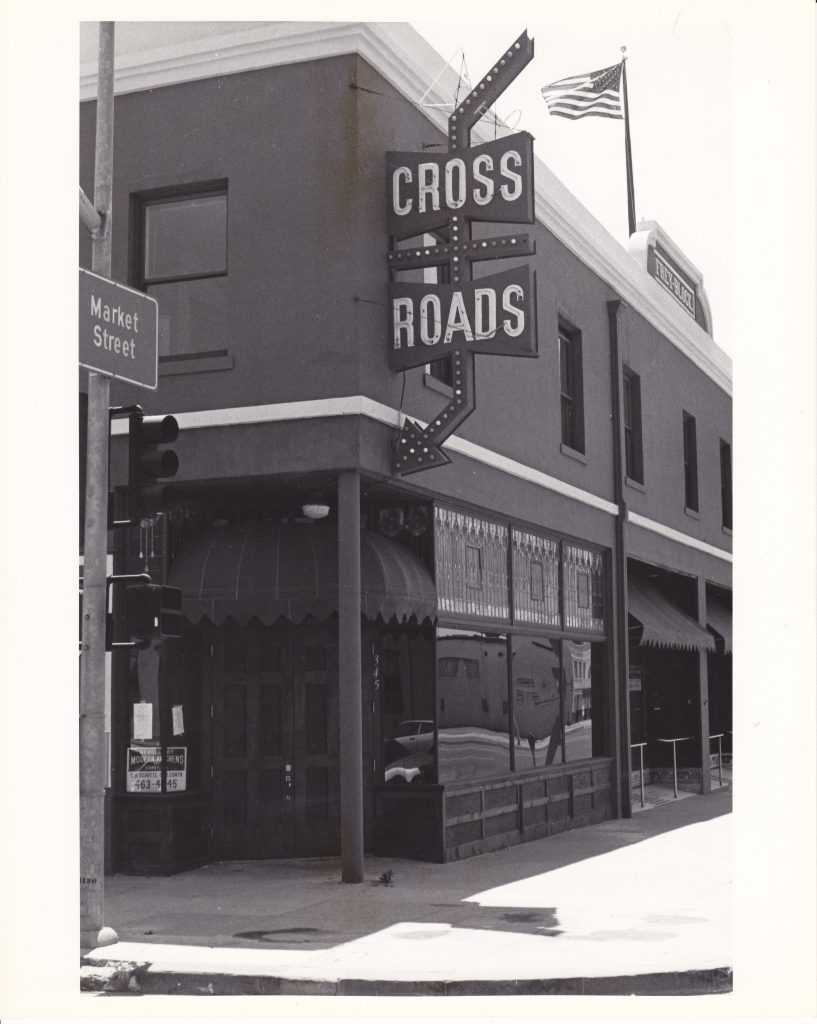No products in the cart.
Landmarks
From Junk to Java
The Frey Block
(1911)
435 Fourth Ave.; SW Corner of 4th and Market
Architect: S.G. Kennedy
Architectural Style: Modern
Most everybody knows where the downtown Starbucks is, but not many know what it was. This well-known corner lot was sold by Alonzo Horton to A. Bowie and A. Amirous for $200.00 in 1869. It changed hands several times and, in 1891, it was acquired by Moses A. Luce, an early San Diego pioneer and prominent attorney and businessman.
Mr. Luce had been a Sergeant in the Union Army and had received a Medal of Honor for his heroism in the American Civil War. At imminent peril to himself and in the face of enemy fire, he assisted and then carried to safety a wounded comrade. After the war, he attended college at Hillsdale College and law school at Albany Law School in Michigan, before heading westward to San Diego. In 1873, he founded the law firm of Luce, Forward, Hamilton and Scripps, which became one of the largest law firms in the United States in terms of revenue. By the early 21st century, the firm employed over 200 attorneys and had a worth of over $110 million. After 139 years, the firm dissolved in 2012.
Mr. Luce was the County Judge from 1875 until 1880 and was a founder and the first commander of the San Diego Grand Army of the Republic General Heintzelan Post (fraternal order of Civil War veterans). Additionally, he served as President of the Board of Trustees of the First Unitarian Church, drafted San Diego’s first city charter and was on the board of several railroad and mining companies. Shortly after he purchased the 4th Avenue lot, he mortgaged it to Alice Van Verson. As Mr. Luce, obviously, had bigger things to attend to, he allowed the property to go to Mrs. Van Verson by default. She then sold the property, which included four wooden buildings, to Leon Frey. All four buildings were frame structures with shingle roofs.
In the largest of the original buildings, Frey and his brothers, Antoine and Joseph, started a junk business. They also served as expressmen, transporting trunks, boxes and other large items rapidly. The brothers, natives of France, were very successful in their enterprises.
Consequently, in 1910, the Frey brothers contracted William F. Campbell to build a new structure on their property. The architect was S.G. Kennedy. The new “modern” edifice, which was divided into several separate businesses, was a frame building lined with brick and tile with a composition roof. It featured a parapet above the roof and two large windows on the Fourth Avenue side. Additionally, the building had two wire glass lightwells (skylights) and large stained-glass windows on the Fourth Avenue street level.
The upper floor of the Frey Block has always been used as a hotel or rooming house. The first hotel was the Hamano from 1912-13, which was then replaced by the Empire. For the first 10 years, part of the upstairs was also the Frey House, managed by Antoine’s wife, Jeanne.
The street level has housed a myriad of commercial establishments including a billiards parlor, a second-hand store, a cafe, a confectionary store and a saloon. During Prohibition, enacted in 1920, the cafe was reputed to be a speakeasy. The confectionary store became the Peking Cafe and then the Hong Nam Cafe.
In 1970, the Frey Block was rehabilitated to its present state. Early on, one of the most significant cultural and historical landmarks, the Crossroads Bar, was located at the location. The Crossroads, a mecca for live jazz music, and credited for preserving the genre, was forced to close in 1984, because of noise complaints. Many great local jazz artists played at the Crossroads, including Walter Fuller and Fro Brigham. Additionally, the Playbill, a steakhouse, was also housed adjacent to the Crossroads.

Some latter 20th century inhabitants included J. Dewers, an art gallery and frame shop and the Bayou Bar and Grill. Currently, they have been replaced by the very popular Starbuck’s, where you can enjoy your morning coffee, while admiring Victorian era stained glass windows, and the Royal India restaurant.
Sandee is the historian for the Gaslamp Quarter Historical Foundation. She can be reached at [email protected].

